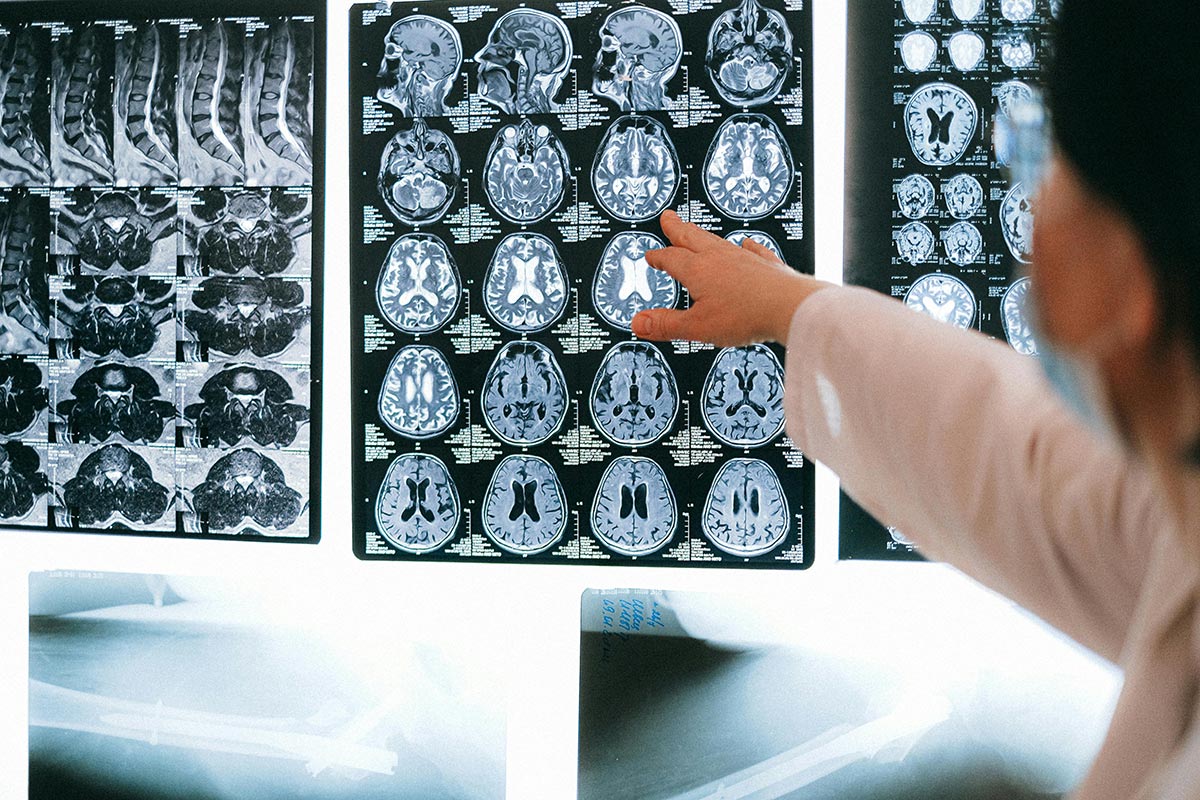
Understanding Cocaine and Its Impact
Cocaine is a powerful stimulant drug that holds a notorious reputation for its potent effects and high addiction potential. Derived from coca leaves, cocaine significantly impacts the brain's reward pathways, leading to increased euphoria and alertness, but also to dependency and a host of serious health complications. Recognizing the signs of cocaine use is crucial for early intervention and support, either for oneself or others.
Behavioral and Cognitive Signs of Cocaine Use

Behavioral Changes
Cocaine use often leads to significant alterations in an individual's behavior. Common signs include:
- Hyperactivity: Users may display increased energy, talking rapidly or excessively.
- Erratic Actions: A tendency towards rash and reckless behaviors, including aggression and impulsivity.
- Secrecy: Individuals may become defensive about their whereabouts and activities, hiding drug use from friends or family.
- Financial Issues: Frequent borrowing of money or sudden financial strain can be a consequence of prioritizing drug use over other expenses.
Cognitive Changes
Cocaine affects the cognitive functions of users, resulting in several noticeable changes:
- Heightened Alertness: Users frequently report intense focus and increased confidence, sometimes leading to poor decision-making.
- Paranoia and Hallucinations: Extended use can lead users to experience delusions and a perception that they are being threatened.
- Memory Impairments: Users may struggle with recalling events, leading to confusion and disorientation.
Consequences of Use
The consequences of behavioral and cognitive symptoms of cocaine use can be severe, including:
- Neglecting Responsibilities: Addicts often prioritize drug use over personal and professional obligations, leading to relationship strain.
- Withdrawal Effects: When alcohol is stopped, withdrawal symptoms can emerge. This includes depression and intense cravings, reinforcing the cycle of dependency.
- Risk of Health Issues: Long-term cocaine use is associated with health complications, including cardiovascular problems and mental health disorders.
Physical Indicators of Cocaine Intoxication

What are the signs and symptoms of cocaine intoxication?
Cocaine intoxication presents a range of signs and symptoms that vary in intensity based on the amount used. Typical behavioral signs include:
- Euphoria and excitement: Users often report feeling overly happy and energetic.
- Restlessness and agitation: Increased nervous energy may manifest as the inability to sit still.
- Excessive talking: Rapid speech or over-excited conversations are common, sometimes leading to rambling.
Physically, cocaine use results in:
- Dilated pupils: Pupils may appear larger and unresponsive to light.
- Increased heart rate and blood pressure: This is a significant physiological reaction to the stimulant drug.
- Muscle tremors: Users may exhibit shaking or twitching as the central nervous system is activated.
- Paleness or clammy skin: A noticeable change in complexion can occur as circulation is affected.
Severe medical issues
In more acute situations, cocaine intoxication can escalate to severe medical crises such as:
- Seizures: These can arise from the drug's excessive stimulation of the brain.
- High blood pressure: Elevated cardiovascular strain may lead to potential complications.
- Myocardial infarction or stroke: Cocaine increases the risk of serious heart conditions, with life-threatening consequences.
- Hyperthermia: Elevated body temperature can pose serious health risks, particularly with high doses.
The combination of these signs often signals a significant health risk, emphasizing the need for immediate vigilance and, if necessary, medical intervention.
Stages and Progression of Cocaine Addiction

What are the stages of cocaine addiction?
Cocaine addiction usually progresses through specific stages, starting with experimentation. This is often initiated by curiosity or social pressure, leading to the first encounter with cocaine. Following experimentation is regular use, where users begin to consume cocaine more frequently, drawn by the euphoric highs it offers.
As the individual continues usage, the next stage is dependence. This involves building both a physical and psychological need for cocaine, where users find it increasingly difficult to manage daily life without the drug. Ultimately, the cycle culminates in full-blown addiction, characterized by compulsive behaviors where the affected individual seeks cocaine despite facing significant negative impacts.
How does cocaine use progress to addiction?
The progression from casual use to addiction typically revolves around escalating dosage and frequency. Initially, users may indulge in sporadic binge sessions to replicate initial feelings of euphoria. But this often leads to tolerance, where larger amounts are required to achieve the same effects.
Over time, reliance on cocaine can overshadow personal and professional responsibilities. The user may experience withdrawal symptoms when not using, amplifying the cycle of cocaine-seeking behavior. The resulting compulsive use disrupts everyday life, often leading to neglect of family, finances, and health. Confronting this addiction often necessitates comprehensive treatment approaches, including medical help and support from loved ones, to effectively manage recovery from this challenging dependency.
Psychosocial and Emotional Impacts of Cocaine Use

Psychosocial Symptoms
Cocaine use can significantly disrupt an individual's social life and relational dynamics. Users often display drastic mood swings, oscillating between periods of euphoria and despondency. This emotional volatility can lead to difficulties in maintaining stable relationships with family, friends, and colleagues. As addiction deepens, users may withdraw from social activities and lose touch with loved ones, opting instead to isolate themselves or engage with other drug users.
Additionally, excessive anxiety and irritability are common psychosocial symptoms. This heightened level of stress can result in decreased enjoyment in previously satisfying activities, leading to a sense of anhedonia or the inability to feel pleasure without the substance. The compulsive nature of cocaine use often drives individuals to engage in risk-taking behaviors, such as financial irresponsibility and legal troubles, further alienating them from their support systems.
Emotional Instability
The rollercoaster of emotional states experienced during cocaine addiction is often alarming. Users may feel bursts of confidence and heightened energy, only to crash into feelings of depression and despair once the drug wears off. This emotional instability is indicative of a profound disturbance in the brain's reward systems, perpetuating a cycle of compulsive drug-seeking behavior. Such rapid shifts can make it challenging for individuals to connect on an emotional level, impairing their ability to maintain healthy relationships and resulting in an escalating feeling of loneliness and despair.
In conclusion, the psychosocial and emotional impacts of cocaine use highlight the profound consequences that extend beyond the individual, affecting their social relationships and overall mental health.
Physical and Environmental Signs of Cocaine Use
Physical Indications
Physical symptoms of cocaine use can become quite obvious, affecting overall health and appearance. Common indicators include:
- Dilated Pupils: One of the most notable signs, as cocaine causes pupils to expand.
- Nasal Damage: Frequent nosebleeds and runny noses are often signs of snorting cocaine, along with chronic nasal infections.
- Increased Heart Rate: Stimulant properties may lead to tachycardia or high blood pressure.
- Weight Loss: This often results from cocaine's appetite-suppressing effects.
- Sweating and Elevated Body Temperature: Users may experience excessive perspiration and difficulty regulating body heat.
- Mood Swings and Restlessness: These can indicate the psychological and stimulatory effects of the drug, leading to increased energy and agitation.
Environmental Clues
Environmental signs of cocaine use may not be as immediately visible but are equally telling. Observing these can reflect potential drug use:
- Drug Paraphernalia: Items such as rolled-up bills, small baggies, or pipes can signal cocaine usage.
- Financial Difficulties: Requests for money or sudden financial problems may be overlooked but often point to spending on drugs.
- Changes in Social Circles: A user might withdraw from family or lose interest in previous friendships, instead associating with other users.
- Legal Issues: Behaviors related to drug possession and use may lead to legal complications, indicating deeper problems with addiction.
Overcoming Cocaine Addiction and Managing Withdrawal

What are the side effects of cocaine withdrawal?
Cocaine withdrawal can be a challenging process, occurring when an individual who has been using cocaine heavily suddenly reduces or stops their use. The side effects are primarily psychological, reflecting the impact the drug has on the brain's reward system.
Common withdrawal symptoms include:
- Fatigue: Users often feel extreme tiredness as their body adjusts to the absence of the stimulant.
- Increased appetite: After cocaine suppresses hunger, many experience intense cravings for food.
- Agitation and anxiety: Psychological instability can lead to feelings of restlessness and panic.
- Depression: This may range from mild to severe, sometimes leading to suicidal thoughts due to the extreme emotional lows.
- Disturbed sleep patterns: Users might suffer from insomnia or overly long sleep periods as their body tries to regain balance.
These symptoms can persist for months following cessation of use, indicating the withdrawal process's serious nature. Diagnosis typically involves comprehensive physical examinations and assessments of the individual's history with cocaine. Depending on the severity of the symptoms, treatment options may include:
- Counseling and therapy: Providing emotional support and coping strategies.
- Medication management: In some cases, antidepressants or anti-anxiety medications may be prescribed to alleviate severe symptoms.
- Residential programs: Many find that inpatient treatment allows for a safer, more structured pathway to recovery.
Addressing these withdrawal symptoms effectively is essential for long-term recovery from cocaine addiction.
Recognizing and Responding to Cocaine Use
Detecting cocaine use and understanding its effects is fundamental in addressing the problem effectively and providing appropriate support. By recognizing the signs of use, from physical symptoms to behavioral changes, individuals and their loved ones can take proactive steps to seek help and mitigate the drug's impact. With informed awareness and timely intervention, it is possible to guide someone towards recovery and a healthier lifestyle, underscoring the importance of vigilance and compassion in the face of addiction.
References
- Cocaine Abuse Signs & Symptoms | Sonora Behavioral Health
- Signs & Symptoms of Cocaine Use - American Addiction Centers
- Cocaine Addiction Signs, Symptoms & Effects - Longleaf Hospital
- 6 Signs of Cocaine Addiction, Symptoms & Effects - CBH
- Cocaine Addiction Signs, Effects, & Withdrawal Symptoms | Options
- What Are the Signs of Cocaine Use? - Healthline
- Cocaine Symptoms And Warning Signs - Addiction Center
- Drug addiction (substance use disorder) - Symptoms and causes
- Cocaine: Addiction, Side Effects and Treatment - Hazelden Betty Ford
- 4 Signs of a Cocaine Addiction - Headwaters
.svg)





